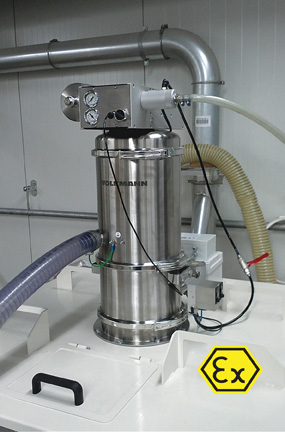
Why Avoiding Dust Explosions is Better Than Suppressing or Containing Them After the Fact – And Here’s How
Combustible dust explosions happen far too often considering the vast amount of knowledge and experience accumulated among process engineers, process equipment manufacturers, industrial safety professionals, and explosion protection system suppliers. An average of 31.8 combustible dust explosions happen every year in the United States alone, according to the DustSafetyScience 2020 Combustible Dust Incident Report, mostly involving the food, wood, and metals industries. Many of these explosive incidents caused fatalities, serious injuries, and triggered financial losses in the millions. Clearly, explosions need to be avoided.
Yet for many companies, the standard procedure for managing dust explosion hazards calls for suppressing, containing, or venting explosions, which means after they explode. Sure, these suppressed, contained, or vented explosions cause much less damage than if they weren’t addressed at all, but doesn’t it make much more sense to prevent any explosion from happening in the first place? This would eliminate the risk and liability entirely – and save lives. That’s how we approach dust explosion hazards in vacuum conveying systems.
How to Avoid Combustible Dust Explosions
In powder handling situations where combustible dust is present, we recommend using a patented pneumatic vacuum conveying system that eliminates the possibility of an explosion. How does that work? For an explosion to occur, a fuel source such as fine dust particles, an ignition source such as a flame, spark or electrostatic discharge, and oxygen all need to be present. If any one of the three are removed or not present then there cannot be an explosive event. It’s just science. And we patented the concept. Our pneumatic vacuum conveyors eliminate any potential sources of ignition when conveying dry powders.
No electricity is needed. No rotating parts to generate heat or an electrostatic charge. Conveying is done at low velocities to minimize static buildup and the whole system is electrically grounded. This contained conveying approach can be safely applied to both gas and dust explosion zones. Our INEX conveying system even works in ATEX Zone 0 (gas EX) discharge areas where an explosive mixture is continuously present or present for long periods of time. INEX, in fact, stands for Inert Explosion-Proof.
For large and complex systems and for handling powders with low Minimum Ignition Energy’s (MIE), avoiding effective ignition sources typically should not be applied as the only protective measurement, according to Dr. Martin Glor of Swiss Process Safety Consulting GmbH. “However, Volkmann Vacuum Conveyors due to the avoidance of effective ignition sources can be applied as a sole protective measurement.”
We’ve custom-engineered hundreds of these vacuum conveyor systems worldwide. They’re ATEX-certified by design and we’re proud to report that every one of them operates safely just as specified.
Learn more about pneumatic vacuum conveyors.